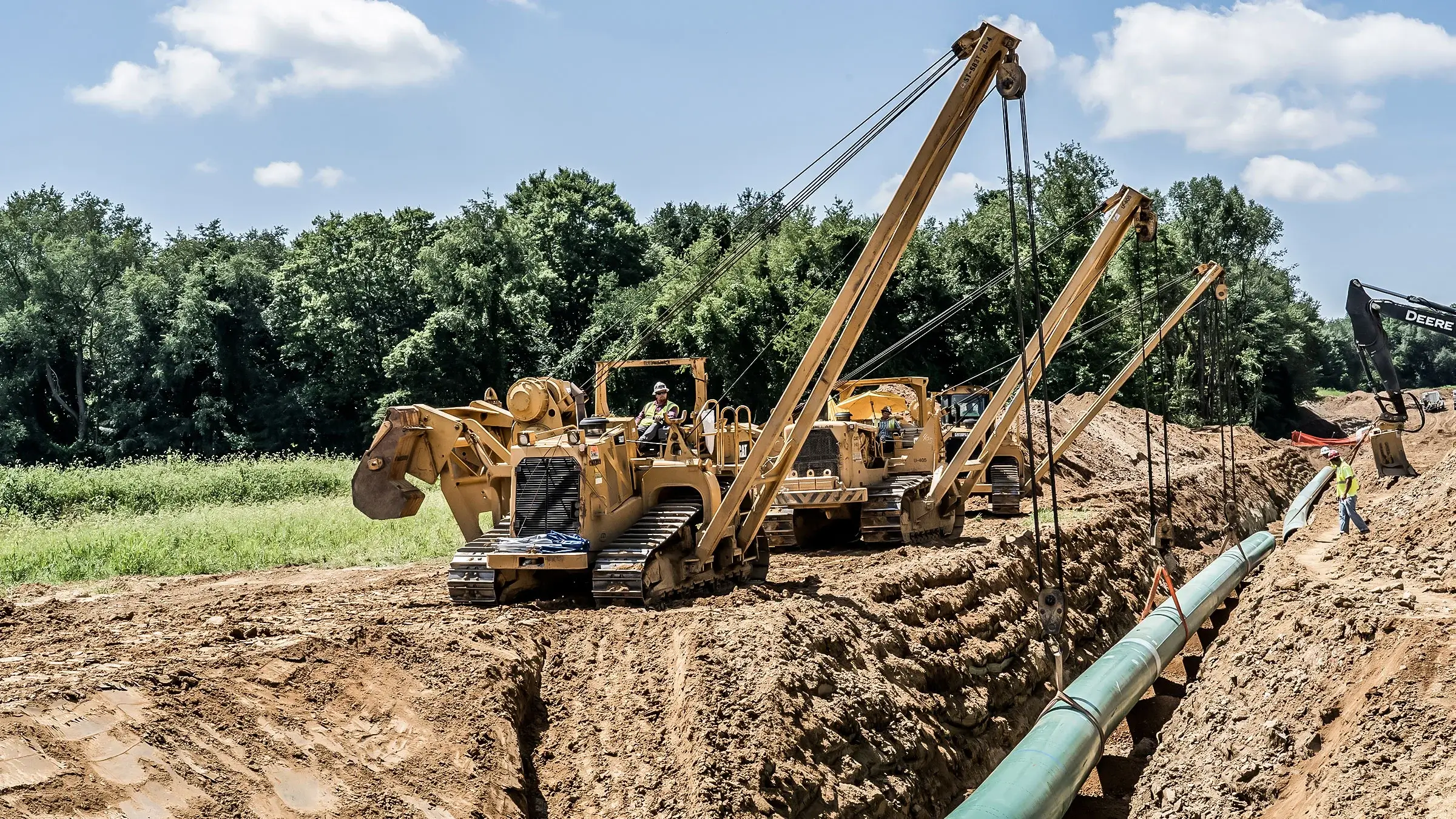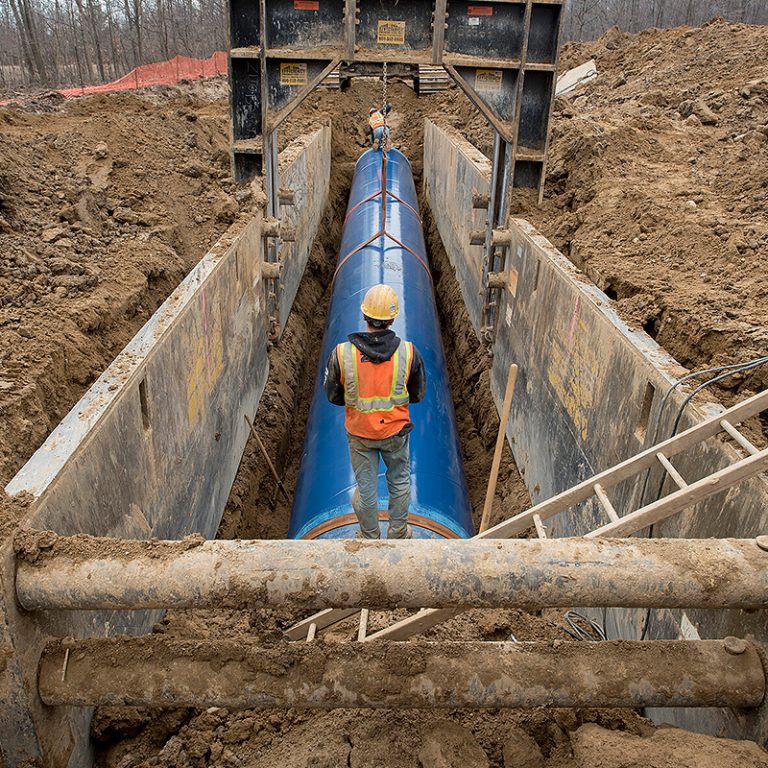Step-by-Step Guide to Successful Creek Pipe pipeline construction
Recognizing the Fundamentals of Pipes Installation: What You Required to Learn About the Refine
Appropriate pipe installation is necessary for any kind of plumbing system. It calls for careful factor to consider of various elements, including material choice and adherence to regional regulations. A well-planned format can avoid issues like pressure loss, while the right tools guarantee reliable joining techniques. However, also experienced installers can make usual errors. Recognizing these essentials can result in an extra reliable and durable system, prompting a better consider the vital components associated with the procedure.
Picking the Right Materials for Pipe Installation
When considering pipe installation, the selection of appropriate products is necessary to ensuring sturdiness and capability. Various products are offered, each offering unique advantages and considerations. PVC pipes are lightweight, resistant to deterioration, and cost-effective, making them suitable for household pipes. On the other hand, copper pipelines, understood for their long life and capability to endure heats, are often chosen for heating systems.Additionally, galvanized steel pipelines provide toughness and toughness, ideal for heavy-duty applications, although they are vulnerable to rust over time.For below ground installments, polyethylene pipelines are preferred as a result of their versatility and resistance to tension fracturing. Correct material option depends on the particular demands of the project, consisting of pressure ratings, temperature variants, and the chemical nature of the liquids being transferred - Creek Pipe Midland. Eventually, informed choices concerning pipe materials contribute greatly to the general success and long life of pipes systems
Recognizing Local Building Codes and Laws
Exactly how can recognizing local building regulations and regulations impact pipe installation? Knowledge with these codes is vital for making certain that pipe setups are safe, certified, and reliable. Neighborhood building codes describe details demands relating to materials, installation techniques, and security measures, which need to be stuck to to avoid possible lawful issues and costly fines.Failure to abide can result in examinations being stopped working, delays in project completion, and even mandated removal of poorly set up pipes. Furthermore, recognizing zoning legislations and laws can affect the kind of materials enabled, as well as the techniques used for installation.Contractors and house owners alike must spend time in assessing local laws before commencing any type of installation job. This positive method not just promotes safety yet additionally improves the total top quality and toughness of the plumbing system, eventually cultivating lasting capability and satisfaction.
Preparation Your Pipe Layout and Design
Proper preparation of pipe format and style is important for attaining an efficient pipes system. This procedure begins with assessing the particular demands of the space, considering the area of fixtures and devices. Precise dimensions assure that pipelines are effectively routed, lessening bends and transforms that can result in push loss.Consideration of the flow rates and the types of products used is essential, as various materials have varying sturdiness and compatibility with plumbing systems. Furthermore, the designer should account for future expansions or adjustments to the design, permitting versatility in situation of renovations.Efficient drain and air flow are also substantial parts of the design, as they prevent blockages and ensure correct waste elimination. Ultimately, cooperation with regional building ordinance guarantees conformity and security, which is extremely important in any type of pipes installation project.
Important Tools and Tools for Installation
Successful pipe installation rests on having the right tools and equipment handy. Crucial tools include pipe cutters for clean cuts, wrenches for tightening installations, and pliers for gripping and transforming pipes. In addition, a degree warranties pipelines are set up evenly, while a determining tape aids in attaining accurate lengths.For details materials, a soldering iron might be necessary for copper pipelines, while a PVC cutter is important for plastic alternatives. Security equipment, such as handwear covers and safety glasses, safeguards installers from prospective hazards throughout the process.A pipeline bender can be particularly valuable for creating smooth contours without compromising honesty, while a torque wrench assurances that connections are safeguarded to the maker's specifications.Having these devices easily offered not only helps with a smoother installation procedure however additionally contributes to the total longevity and performance of the pipes system. Correct equipment is essential in attaining long-lasting results.
Methods for Appropriate Pipe Signing Up With and Securing
Accomplishing a safe and leak-free connection between pipelines needs cautious interest to signing up with and securing strategies. Different techniques exist, each suited to various pipe products and applications (Creek Pipe Texas oilfield). As an example, welding is typically employed for metal pipes, making sure robust links with heat combination. On the other hand, plastic pipes gain from solvent concrete or fusion welding, creating solid, permanent bonds.Threaded connections prevail in both steel and plastic piping, requiring exact alignment and the usage of appropriate sealers, such as Teflon tape or pipe dope, to avoid leakages. Compression installations supply another choice, where mechanical pressure safeguards the pipelines together, making them conveniently took apart for maintenance.Regardless of the method picked, appropriate preparation is essential. This consists of cleansing pipe ends and ensuring they are devoid of particles. Carrying out these techniques vigilantly will improve the durability and dependability of the pipe system, eventually adding to its efficient efficiency
Common Errors to Avoid During Installation
During pipe installation, preventing common errors is vital for guaranteeing a trustworthy and efficient system. One regular mistake is falling short to determine and cut pipes properly, which can lead to inappropriate fittings and leaks. In addition, neglecting to examine the compatibility of products can lead to corrosion or various other damages gradually. Incorrectly safeguarding joints and connections can additionally produce powerlessness in the system, triggering possible failures.Another usual error is ignoring the value of slope and drain; pipelines have to be installed at the correct angle to help with proper circulation. Inadequate support for pipelines can result in sagging and anxiety, affecting the stability of the system. Eventually, disregarding regional codes and guidelines can cause pricey rework and safety and security hazards. By knowing these risks, installers can right here considerably enhance the toughness and performance of pipe systems.
Maintenance Tips for Durable Pipe Equipments
To assure the durability of pipe systems, normal examinations and cleansing are important methods. These measures assist identify prospective issues before they escalate into major problems. Additionally, employing appropriate insulation methods can better protect pipelines from temperature blog here changes and environmental factors.
Routine Inspections and Cleaning
Regular evaluations and cleaning are vital for keeping the longevity and effectiveness of pipe systems. Frequently analyzing pipes for indicators of corrosion, leakages, or blockages can assist determine possible problems before they rise into pricey repair services. Cleaning up pipes periodically eliminates buildup that can limit circulation and advertise damage. It is advisable to set up assessments at least once a year, but much more constant checks might be required in high-usage settings. Making use of specialist services for extensive cleansing warranties that all debris is efficiently removed. Furthermore, maintaining records of inspections and maintenance tasks aids in tracking the system's health with time - Creek Pipe HDPE installation. By prioritizing these methods, residential property proprietors can enhance the reliability and life-span of their pipe systems
Correct Insulation Methods
Efficient insulation methods play a crucial function in preserving the performance and durability of pipe systems. Correct insulation decreases warmth loss in hot water pipes and avoids freezing in cold water pipes, considerably minimizing power costs and potential damages. Typical materials used for insulation consist of fiberglass, foam, and rubber, each offering varying degrees of thermal resistance. It is crucial to assure that insulation is used consistently, covering all revealed areas without spaces. In addition, safeguarding insulation with suitable bolts discover this info here helps preserve its position and performance over time. Routine inspections must be performed to determine wear and tear, assuring timely replacements. By carrying out these strategies, pipe systems can operate successfully and have an extended life span, eventually profiting both the environment and the house owner.

Regularly Asked Inquiries
How Do I Identify the Appropriate Pipe Dimension for My Job?
Identifying the appropriate pipe dimension entails assessing the project's flow requirements, stress specs, and the type of fluid being delivered. Consulting design criteria and performing computations warranties ideal efficiency and performance in the installation procedure.
What Are the Ecological Influences of Different Pipe Products?

Can I Set Up Pipes Myself or Should I Work with a Specialist?
The question of whether to install pipes separately or hire a professional usually depends on the person's skill degree and job complexity. A professional may guarantee compliance with guidelines and reduce possible lasting problems.

Exactly How Long Can I Anticipate My Pipe Installation to Last?
The durability of pipe installation differs significantly, normally lasting 20 to 100 years, depending on materials, installation quality, and upkeep. Regular assessments and correct treatment can improve resilience and prevent early failures.

What Are the Signs of a Failing Pipe System?
Indicators of a stopping working pipe system include regular leaks, unusual water stress modifications, blemished water, mold growth, and consistent moisture. Home owners need to monitor these indicators to prevent costly damage and assurance timely repair services are made.